Honeywell 7800 Series Burner Controller Manual: A Comprehensive Guide
The Honeywell 7800 series burner controller is a microprocessor-based system designed for single-burner applications using gas, oil, or a combination of fuels. This comprehensive guide delves into the features, functionality, and operation of the 7800 series, providing users with the knowledge necessary for safe and efficient burner control.
The Honeywell 7800 Series represents a line of microprocessor-based integrated burner controls. These controls are designed for automatically fired gas, oil, or combination fuel single-burner applications. They offer enhanced safety, functionality, and features beyond conventional controls.
Overview of the 7800 Series Burner Control
The Honeywell 7800 Series burner controls represent a significant advancement in combustion management technology. Designed as microprocessor-based integrated systems, they cater to automatically fired single-burner applications utilizing gas, oil, or a combination of fuels. This series is engineered to surpass the capabilities of traditional controls, providing enhanced safety features, expanded functional capabilities, and advanced diagnostic tools.
These controls automate burner sequencing, oversee flame supervision, provide system status indication, and offer diagnostics for simplified troubleshooting. Select models within the 7800 Series are also equipped with remote monitoring capabilities through Honeywell’s Thermal IQ Connected Plant solution. This allows for real-time performance analysis and remote adjustments, optimizing burner efficiency and minimizing downtime. The 7800 series is suitable for diverse burner types, marking it as an industrial burner control solution.
Microprocessor-Based Integrated Burner Control
The Honeywell 7800 Series distinguishes itself through its utilization of a microprocessor-based integrated design. This advanced architecture forms the core of its enhanced functionality and reliability. Unlike conventional controls that rely on discrete components and complex wiring, the 7800 Series integrates all essential burner management functions into a single, intelligent unit. The microprocessor at the heart of the system executes sophisticated algorithms to manage burner sequencing, flame monitoring, and safety interlocks with exceptional precision.
This integration simplifies installation, reduces wiring complexity, and improves overall system performance. It enables advanced features such as self-diagnostics, remote communication, and precise control over combustion parameters. Furthermore, the microprocessor-based design allows for greater flexibility and adaptability, accommodating a wider range of burner configurations and fuel types. The 7800 series offers superior control and monitoring capabilities.
Applications: Gas, Oil, and Combination Fuel Burners
The Honeywell 7800 Series Burner Control is engineered for versatility, accommodating a wide spectrum of burner applications. It’s adept at managing burners fueled by natural gas, offering precise control over gas flow and combustion for optimal efficiency and safety. Additionally, it seamlessly integrates with oil-fired systems, regulating oil delivery and atomization to ensure clean and complete combustion. Its adaptability extends to combination fuel burners, capable of switching between gas and oil seamlessly or operating with a blend of both.
This flexibility makes the 7800 Series ideal for diverse industrial and commercial settings. This includes power generation, heating plants, and manufacturing processes where fuel flexibility is paramount. The controller’s advanced algorithms can automatically adjust combustion parameters based on the selected fuel, ensuring consistent and reliable performance across various fuel types.

Key Features and Functionality
The Honeywell 7800 series boasts automatic burner sequencing, flame supervision, and system status indication. It offers diagnostics for troubleshooting and remote monitoring via Thermal IQ, enhancing operational efficiency.

Automatic Burner Sequencing
The Honeywell 7800 series excels in automatic burner sequencing, ensuring a safe and efficient start-up and shutdown process for single-burner applications. This feature meticulously manages the burner’s operational stages, including pre-purge, pilot ignition, main flame establishment, and post-purge cycles. By automating these sequences, the 7800 series minimizes the risk of human error and optimizes combustion performance. The system’s intelligent design incorporates safety interlocks and checks at each stage, guaranteeing a secure and reliable operation. Automatic burner sequencing contributes to reduced fuel consumption, lower emissions, and enhanced overall system longevity. The 7800 series consistently delivers reliable burner control, making it suitable for diverse industrial applications. This advanced functionality elevates safety and efficiency standards in burner operations.
Flame Supervision and Safety
Flame supervision and safety are paramount in the Honeywell 7800 Series burner control system. This system vigilantly monitors the burner flame, ensuring its stability and proper establishment throughout the combustion process. Using advanced flame detection technology, the 7800 series instantly identifies flame failures and initiates a safe shutdown sequence to prevent hazardous conditions. The system’s robust safety features include continuous self-diagnostics, which actively monitor critical components and functions, providing early warnings of potential issues. By prioritizing flame supervision and incorporating multiple safety interlocks, the 7800 series minimizes the risk of explosions or other combustion-related accidents. The Honeywell 7800 series consistently delivers reliable flame monitoring, making it suitable for diverse industrial applications. This advanced functionality elevates safety and efficiency standards in burner operations.
System Status Indication and Diagnostics

The Honeywell 7800 Series offers comprehensive system status indication and diagnostic capabilities, providing users with real-time insights into burner operation. The Keyboard Display Module (KDM) displays operational data, fault codes, and system parameters, facilitating easy monitoring and troubleshooting. Advanced diagnostics enable quick identification of issues, reducing downtime and optimizing maintenance efforts. The system performs continuous self-checks, identifying potential problems before they escalate into major failures. Fault history logs allow technicians to analyze past events and prevent recurring issues. Remote monitoring capabilities, via Thermal IQ, offer remote access to system data and diagnostics. The Honeywell 7800 series ensures efficient operation and safety by promptly communicating burner status and rapidly identifying potential problems. Clear indications and advanced diagnostic tools allow users to maintain optimal performance and minimize disruptions.
Remote Monitoring via Thermal IQ (Honeywell Connected Plant)
The Honeywell 7800 Series burner control system can be remotely monitored through Thermal IQ, a Honeywell Connected Plant solution. This feature allows users to access real-time data and diagnostics from anywhere, improving operational efficiency and reducing maintenance costs. Thermal IQ provides remote monitoring, enabling proactive maintenance and faster response times to potential issues. Authorized personnel can view system status, performance metrics, and historical data through a secure online portal. Remote diagnostics capabilities enable technicians to troubleshoot problems remotely, reducing the need for on-site visits. Thermal IQ enhances collaboration between operators and service providers, improving overall system reliability. It is a powerful tool for optimizing burner performance and ensuring continuous operation. With remote monitoring, users can proactively address issues and prevent downtime, improving system reliability and reducing operational costs.
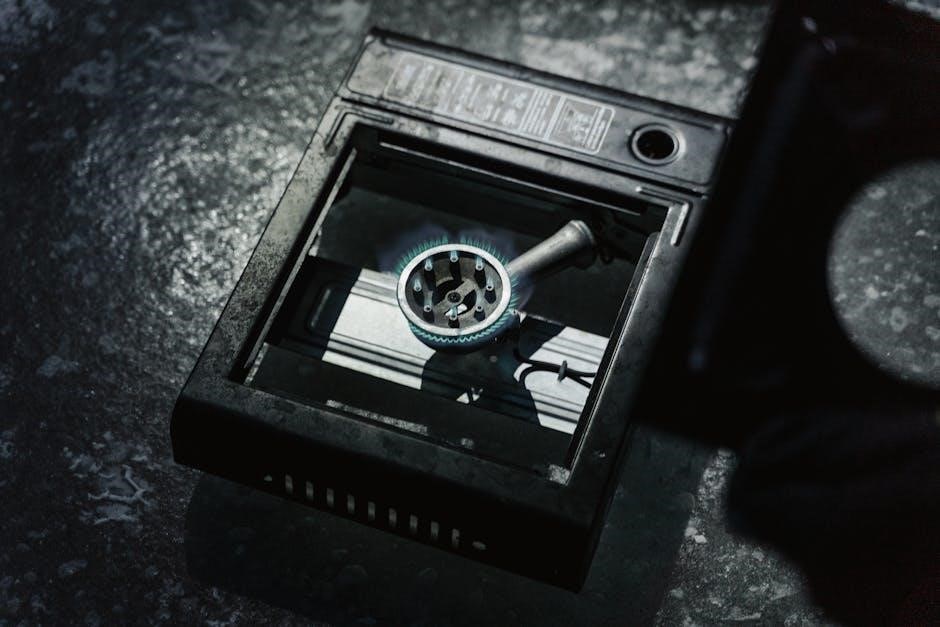
7800 Series Components
The Honeywell 7800 series comprises several key components, including relay modules, subbases, amplifiers, purge cards, and keyboard display modules, all designed to work together for optimal burner control.
Relay Modules (RM7890A, B, C, RM7800/RM7840, RM7824A, RM7890A/B)
The Honeywell 7800 series relay modules, including the RM7890A, B, C, RM7800/RM7840, RM7824A, and RM7890A/B, are microprocessor-based integrated burner controls designed for automatically fired gas, oil, or combination fuel single-burner applications. These modules provide automatic burner sequencing, flame supervision, and system status indication. They are engineered to offer a high level of safety, functionality, and advanced features. The RM7824A is a 24 Vdc module, while others operate on different voltage specifications. These modules are essential components of the 7800 series, ensuring reliable and efficient burner operation. They are designed to meet the demands of industrial burner control applications, providing robust performance and diagnostic capabilities for troubleshooting.
Subbase
The subbase in the Honeywell 7800 series burner control system serves as the foundation for mounting the relay module and provides electrical connections between the module and the field wiring. It is a critical component, ensuring proper communication and power distribution within the burner control system. The subbase is designed for easy installation and maintenance, with clearly labeled terminals for connecting various input and output signals. It facilitates the integration of the relay module with other system components, enhancing the overall reliability and functionality of the burner control. Proper installation of the subbase is essential for the safe and efficient operation of the burner system, ensuring a secure and stable connection for all electrical components.
Amplifiers
Amplifiers within the Honeywell 7800 series burner control system play a crucial role in flame detection and supervision. These amplifiers are designed to receive and amplify the weak signals generated by the flame sensor, ensuring reliable flame detection even under challenging conditions. They convert the flame signal into a usable input for the relay module, enabling the system to accurately monitor the presence and stability of the flame. Different amplifier types are available, each tailored to specific flame sensor technologies and application requirements. Selecting the correct amplifier is critical for optimizing flame detection performance and ensuring the safe and reliable operation of the burner system. Proper amplifier configuration and maintenance are essential for maintaining flame supervision integrity.
Purge Card
The purge card is an essential component of the Honeywell 7800 series burner control system, responsible for ensuring a safe and reliable burner startup. Its primary function is to control the pre-purge sequence, which involves clearing any accumulated combustible gases or vapors from the combustion chamber before ignition. The purge card regulates the timing and duration of the pre-purge cycle, ensuring that the combustion chamber is adequately ventilated. This process minimizes the risk of explosions or hazardous conditions during burner startup. The purge card interacts with other system components, such as the air damper and fan, to effectively evacuate the combustion chamber. Proper functioning of the purge card is vital for maintaining the overall safety of the burner system.
Keyboard Display Module (KDM)
The Keyboard Display Module (KDM) serves as the primary interface for operators to interact with the Honeywell 7800 series burner control system. This module provides a user-friendly interface for monitoring system status, accessing diagnostic information, and performing essential functions such as remote reset. The KDM typically features a multi-line LCD screen that displays real-time operational data, fault codes, and system parameters. Operators can use the keyboard to navigate menus, view reports, and adjust settings. The KDM facilitates remote monitoring and troubleshooting, allowing technicians to quickly identify and resolve issues. It plays a crucial role in ensuring efficient and safe operation of the burner system by providing operators with the necessary tools for monitoring and control. The KDM enhances usability and simplifies system management.

Installation and Operation
Proper installation and operation of the Honeywell 7800 series are crucial for safety and optimal performance. This section outlines user responsibilities, wiring guidance, and remote reset procedures to ensure correct system setup.
User Responsibilities for Safe Installation and Operation
Users bear critical responsibilities regarding the safe installation and operation of the Honeywell 7800 Series relay modules. Adhering to safety guidelines is paramount to maintaining the designed safety level of the system. This includes ensuring qualified personnel handle the installation process, carefully following wiring diagrams, and understanding local codes.
Regularly inspect the system for any signs of damage or wear, and promptly address any issues. Familiarize yourself with the system’s operation manual and troubleshooting procedures. Always open the master switch to cut off the power supply before removing or installing any components.
Implement proper preventative maintenance schedules. Never bypass or disable safety features. Proper grounding is crucial. Understand the flame safeguard system and its response to flame failures. Ensure proper ventilation and combustion air supply. These actions contribute significantly to safe and reliable operation.
Wiring Diagrams and Conversion Instructions
Proper wiring is crucial for the Honeywell 7800 Series burner controller to function correctly and safely. Refer to detailed wiring diagrams specific to your model, such as the RM7895. These diagrams provide precise instructions on connecting the various components, ensuring compatibility and preventing electrical hazards.
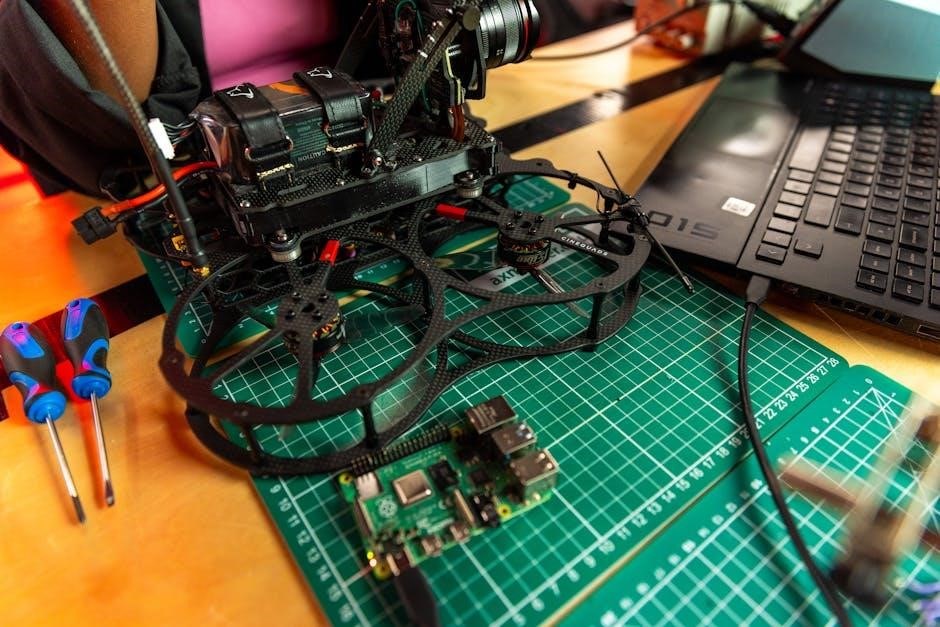
Conversion instructions are equally important when upgrading or replacing existing systems. These instructions outline the steps necessary to adapt the wiring to accommodate the new 7800 Series controller. Pay close attention to the pin assignments and voltage requirements. Incorrect wiring can lead to system malfunction, damage to equipment, or hazardous situations.
Always disconnect the power supply before working on any wiring connections. Use appropriate tools and follow all applicable electrical codes. If you are unsure about any aspect of the wiring or conversion process, consult a qualified technician. Proper wiring ensures reliable and safe burner operation.
Remote Reset
The Honeywell 7800 Series offers a remote reset capability, enhancing operational convenience and efficiency. This feature allows users to reset the burner controller from a remote location, eliminating the need to physically access the control panel. Remote reset is particularly useful in situations where the burner is located in a difficult-to-reach area or when immediate reset is required without delay.
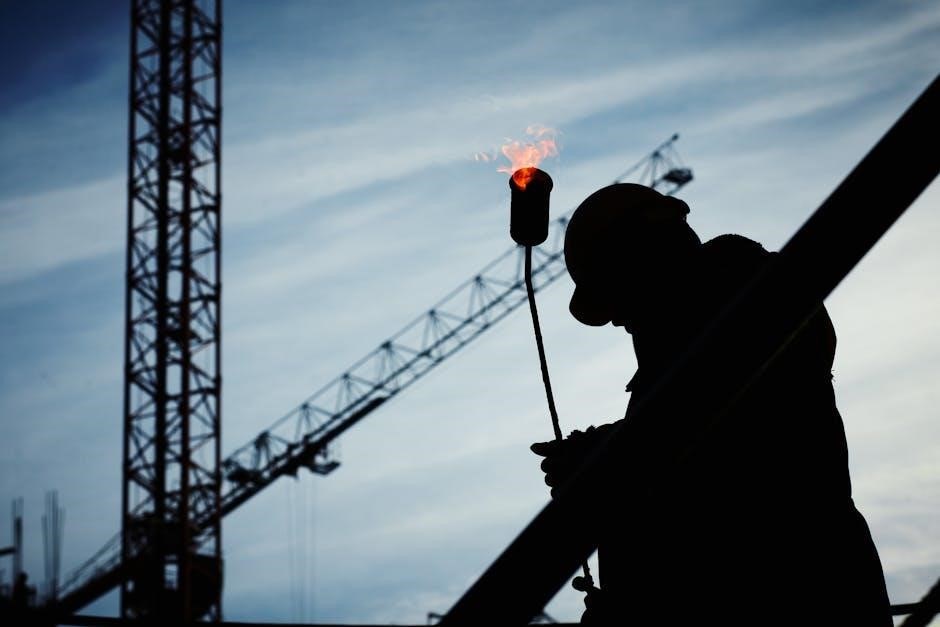
To implement remote reset, ensure proper wiring and configuration according to the Honeywell 7800 Series manual. The remote reset function can be activated through a designated switch or a building automation system. This feature streamlines operations, saving time and improving overall system management.
Always investigate the cause of the burner trip before performing a remote reset to prevent recurring issues. Monitor the system status after the reset to ensure proper functionality and address any underlying problems promptly.
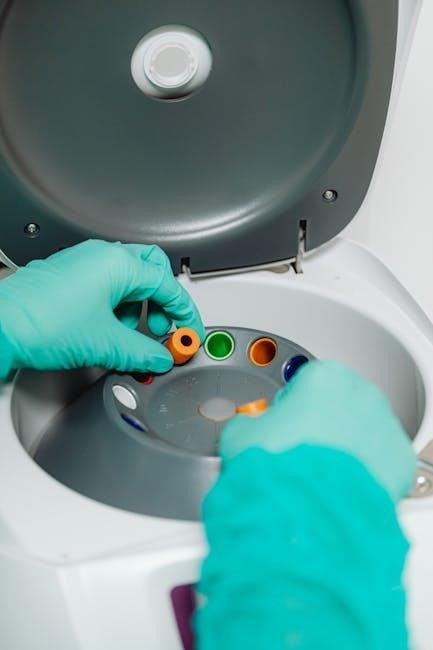
Troubleshooting and Maintenance
Effective troubleshooting and maintenance are vital for the Honeywell 7800 Series. Addressing system diagnostics, common issues, and utilizing testing tools ensures reliable burner operation and prolongs the controller’s lifespan.
System and Self-Diagnostics
The Honeywell 7800 series burner controllers are equipped with advanced system and self-diagnostics capabilities to ensure optimal performance and safety. These controllers continuously monitor critical parameters, such as flame signal strength, internal component health, and communication integrity, to detect potential issues proactively. The self-diagnostics feature allows the controller to identify internal faults and provide diagnostic codes that aid in troubleshooting.
The system diagnostics extend beyond the controller itself, encompassing the entire burner system, including flame sensors and valve proving. This comprehensive monitoring allows for quick identification and resolution of problems, minimizing downtime and enhancing overall system reliability. The 7800 series also features fault history logging, providing a record of past issues for analysis and preventative maintenance. By leveraging these diagnostic tools, operators can maintain a safe and efficient burner operation, reducing the risk of unexpected shutdowns and costly repairs.
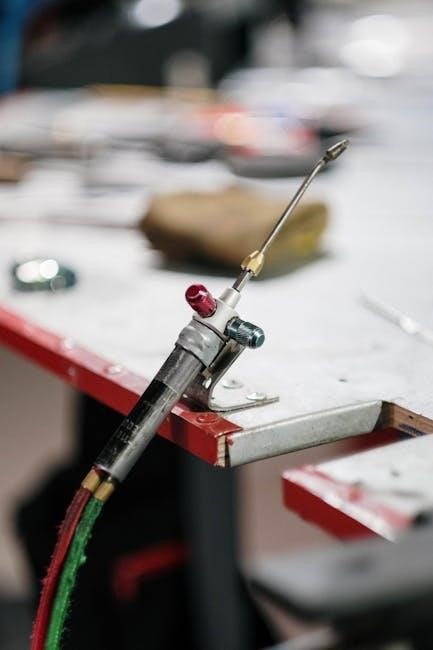
Common Issues and Solutions
The Honeywell 7800 series burner controllers, while robust, may encounter common issues during operation. One frequent problem is flame failure, often caused by a faulty flame sensor or incorrect wiring. The solution involves inspecting and cleaning the sensor, verifying wiring connections, and ensuring proper sensor alignment. Another issue arises from intermittent operation, potentially due to loose connections, voltage fluctuations, or component degradation. Addressing this requires checking all electrical connections, stabilizing the power supply, and replacing any failing components.
Furthermore, error codes displayed on the Keyboard Display Module (KDM) indicate specific faults within the system. Consulting the 7800 series manual for error code definitions is crucial for accurate troubleshooting. Regularly inspecting and maintaining the burner system, including cleaning flame sensors and verifying wiring integrity, can prevent many common issues. If problems persist, consulting a qualified technician familiar with the Honeywell 7800 series is recommended to ensure safe and effective repairs.
Tester for 7800 Series FSG Controllers
The tester designed for the Honeywell 7800 Series Flame Safeguard (FSG) controllers is an invaluable tool for diagnosing system faults and verifying proper operation. This device allows technicians to simulate flame conditions and test the controller’s response, ensuring that the flame detection circuitry is functioning correctly. The tester typically includes flame detector test jacks to facilitate easy connection and testing of various flame sensor types. By using the tester, potential issues with flame sensing can be identified without requiring an actual flame, increasing safety and reducing downtime.
Moreover, the tester aids in confirming proper wiring and configuration of the FSG controller. It can also be used to verify the functionality of safety interlocks and other critical components within the burner management system. Regular use of the tester as part of a preventive maintenance program helps ensure the continued reliability and safety of the Honeywell 7800 Series FSG controllers.


